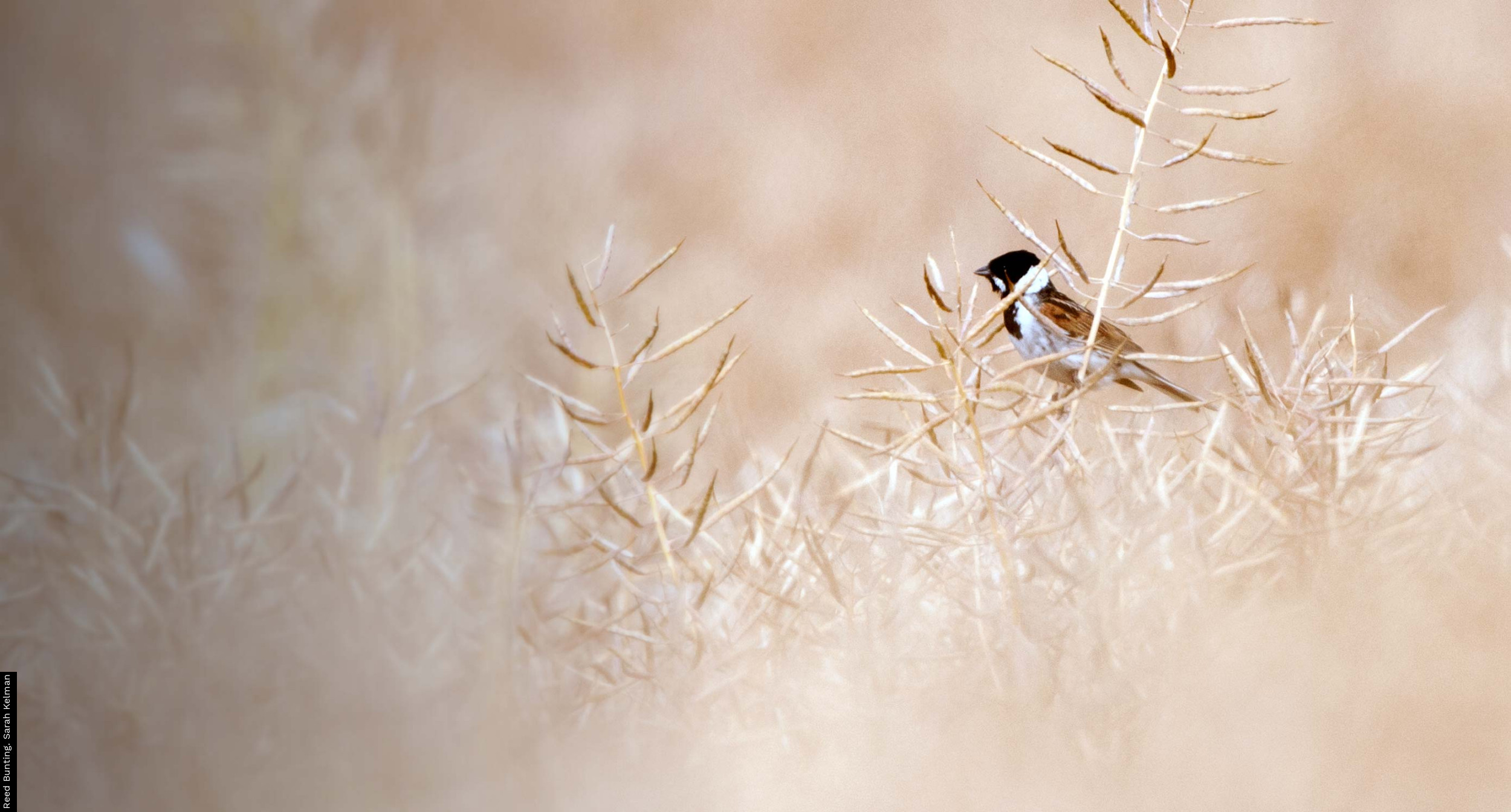The BTO's Nest Record Scheme is the largest, longest-running and most highly computerised of such schemes in the world and employs the most advanced and efficient techniques of data gathering, data capture and analysis (Crick et al. 2003). BTO now holds more than 1.8 million nest records, of which approximately 60% are already computerised.
The primary aim of the Nest Record Scheme is to monitor the breeding performance of a wide range of UK birds annually as a key part of the BTO's data collection. Periodic reports are published in BTO News (e.g. Leech & Barimore 2008) or Life Cycle magazine and the significant results communicated immediately to JNCC. Another primary aim is to undertake detailed analyses of breeding performance of species of conservation interest (e.g. Crick et al. 1994, 2002, Brown et al. 1995, Peach et al. 1995a, Crick 1997, Chamberlain & Crick 1999, 2003, Siriwardena et al. 2001, Freeman & Crick 2003, Browne et al. 2005, Tryjanowski et al. 2006, Douglas et al. 2010b).
The Nest Record Scheme gathers data on the breeding performance of birds in the UK through a network of volunteer ornithologists. Each observer is given a code of conduct that emphasises the responsibility of recorders towards the safety of the birds they record and explains their legal responsibilities. These observers complete standard nest record cards for each nest they find, or submit computerised data, giving details of nest site, habitat, contents of the nest at each visit and evidence for success or failure. When cards are received by the BTO staff, they are checked, sorted and prepared for input and analysis. Data are prioritised for computer input according to their potential for population monitoring and for specific research projects. Those for Schedule 1 species are kept confidential. (These are species protected from disturbance at the nest by Schedule 1 of the Wildlife and Countryside Act 1981: they are generally rare species and the location of their nests may need to be protected from egg collecting (an illegal activity for every wild bird) or other potential disturbance. A special licence is required to visit any nest of a Schedule 1 species.) Computer programs developed by BTO check the data for errors and calculate first-egg date, clutch size and rates of nest loss at the egg and chick stages.
Currently the BTO collects c.40,000 nest records per year for about 180 species. Typically, more than 150 records are received each year for 50 species and over 100 for a further 15–25 species. The quality of records improved substantially in 1990 with the introduction of a new recording card, which promotes greater standardisation and clarity. Currently, volunteers may submit data on card, via the MS Windows software 'IPMR' or via the online portal 'Demography Online'. The general distribution of completed nest records is patchy at the county scale but is more even over larger regions of the UK. Overall, Northern Ireland and parts of Scotland (southeast, Western Isles) and parts of England (West Midlands, southwest) have relatively low coverage, often reflecting observer density. A major analysis of trends over time in various aspects of breeding performance found relatively few differences between major regions, when analysed using analysis of covariance (Crick et al. 1993). The scheme receives records from all the UK's major habitats. Most records come from woodland, farmland and freshwater sites, but the scheme also receives data from scrub, grassland, heathland and coastal areas.
Data analysis
Five different variables are analysed for this report: laying date; clutch size; brood size; and daily nest failure rates during egg and nestling stages, calculated using the methods of Mayfield (1961, 1975) and Johnson (1979) (see Crick et al. 2003 for a review).
To minimise the incidence of errors and inaccurately recorded nests, a set of rejection criteria was applied to the data: laying date included only cases where precision was within ±5 days; clutch size was not estimated for nests which had been visited only once, for nests which were visited when laying could still have been in progress, or for nests which were visited only after hatching; and maximum brood size was calculated only for nests which were observed after hatching. The last variable is an underestimate of brood size at hatching, because observers may miss early losses of individual chicks; it differs from clutch size because some eggs may be lost during incubation or fail to hatch.
Daily failure rates of whole nests were calculated using a formulation of Mayfield's (1961, 1975) method as a logit–linear model with a binomial error term, in which success or failure over a given number of days (as a binary variable) was modelled, with the number of days over which the nest was exposed during the egg and nestling periods as the binomial denominator (Crawley 1993, Etheridge et al. 1997, Aebischer 1999). Numbers of exposure days during the egg and nestling periods were calculated as the midpoint between the maximum and minimum possible, given the timing of nest visits recorded on each nest record (note that exposure days refer only to the time span for which data were recorded for each nest and do not represent the full length of the egg or nestling periods). Each calculation assumes that failure rates were constant during the period considered. Violations of this assumption of the Mayfield method can lead to biased estimates if sampling of nests is uneven over the course of each period. It is unlikely that any such bias would vary from year to year so, although absolute failure rates may be biased, annual comparisons should be unaffected (Crick et al. 2003). In this report, therefore, we present only temporal trends in daily nest failure rates.
As the combined influence of concurrent trends in these individual breeding parameters on overall productivity is difficult to assess, the estimates produced are used to derive an annual mean estimate of the number of 'fledglings produced per breeding attempt' (FPBA) according to the equation below (Crick et al. 2003):
FPBA = CS × HS × (1 – EF)EP × (1 – YF)YP
where CS represents clutch size, HS represents hatching success, EF and YF represent egg- and chick-stage daily failure rates and EP and YP represent the length of the egg and nestling periods. Standard errors were derived using the formula given by Siriwardena et al. (2000b).
Statistical analyses of nest record data were undertaken using SAS programs (SAS 2011). Regressions through annual mean laying dates, clutch sizes and brood sizes were weighted by sample size. Nest survival was analysed by logistic regression. Quadratic regressions were used when the inclusion of a quadratic term provided a significant improvement over linear regression. These are described as 'curvilinear' in the tables on species pages. Significant linear trends are described as 'linear'. The better-fitting regressions (i.e. quadratic or linear) are presented on the figures in this report. Where neither regression is significant, the linear regression line is shown for illustration.
Data presentation
Results are presented only if the mean sample size of records for a particular variable and species exceeds 10 per year, and are presented with a caveat for small sample sizes if the mean number of records contributing data was between 10 and 30 per year.
Note that the data presented are modelled figures. As a result, the presented figures may appear anomalous under certain unusual circumstances, as was the case for Buzzard in the BirdTrends 2017 report, which showed a figure for the number of fledglings per breeding attempt that was higher than the brood size in the same year. As each variable is modelled separately using the best fitting regression line for that variable, this anomaly can occur if the best fitting model is different for each variable.
Visit the Nest Record Scheme section of the BTO website.
This report should be cited as: Massimino, D., Woodward, I.D., Hammond, M.J., Barber, L., Barimore, C., Harris, S.J., Leech, D.I., Noble, D.G., Walker, R.H., Baillie, S.R. & Robinson, R.A. (2020) BirdTrends 2020: trends in numbers, breeding success and survival for UK breeding birds. BTO Research Report 732. BTO, Thetford. www.bto.org/birdtrends





Share this page